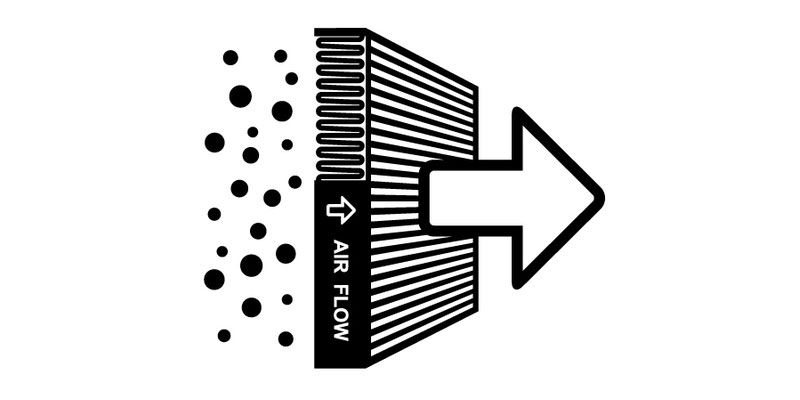An air scrubber is a stand-alone machine that does not hook up to any ducting… so, how does it work? Air scrubbers suck in air and then use a series of filters to clean the air before pushing it back out so it recirculates throughout a space. Thus, offering an effective way to improve air quality.
A negative air machine takes it a step further. It includes ducting that creates a vacuum effect to extract contaminated air from a sealed environment. Since contaminated air is completely removed from the space, a negative air machine can help limit the risk of contamination to other parts of the building. Need help deciding which is right for you? Contact us today, and we are more than happy to help!
Most airborne particles you want to avoid breathing are so small you can’t even see them. These particles are measured in micrometers. Viruses are some of the smallest of all and they can survive for the longest time on surfaces—up to 10 days!
How an Air Scrubber Works
The Filters
An air scrubber is tasked with cleaning air without dispelling it outside. Therefore, it relies on a series of filters that weed through the tinniest of particles. The more filters an air scrubber is outfitted with, the higher capture efficiency it offers. The first pre-filter is designed to catch larger particles, with primary filters following suit to capture the smaller particles.
Pre-Filters
The first stage is the pre-filter, this filter is tasked with capturing the largest particles in the air. By catching larger particles first, you can extend the lifespan of filters designed to capture smaller particles. Without a pre-filter, the primary filters would quickly clog up with large particles and need to be cleaned and replaced quite frequently. Also, pre-filters help the air scrubber maintain greater efficiency and airflow rate. The pre-filter is typically changed several times before the primary filter requires replacement.
Primary Filters
Primary filters are tasked with capturing the tinniest particles in the air. The primary filter should be a HEPA filter so that it can capture particles as small as 0.3 microns. This type of filter has been tested in a lab and is proven to capture up to or more than 99.97% of particles.
Carbon Filters
Carbon filters are an optional addition to most air scrubbers. There is a space included to slide this optional filter in place. A carbon filter is used to remove gas and vapor molecules—the things we can smell. Therefore, if odor is an issue in a space, this is a valuable addition to your air scrubber. It works because the carbon filter attracts the odors and causes them to absorb into it. One gram of activated carbon has the capacity to absorb up to 2,000 square meters (surface area) of smelly odor molecules.
The Blower
The blower is another important component that works with the filters to create cleaner air. It is tasked with pulling air in and running it through the filters, before pushing the air back out. Some blowers can be switched to different speeds to accommodate unique scenarios and room sizes.
The filters and blower must be properly matched to prevent issues from arising. For instance, a blower with too much power can overwhelm the filters and decrease overall efficiency. On the other hand, if a blower doesn’t have enough power it cannot maintain consistent negative air pressure. Therefore, it is unable to do its job properly.
Rent or Buy Air Scrubbers from Cooling Power
Rent or buy the latest air scrubbers from us! We have a wide selection of air scrubbers and negative air machines to choose from. Per request, we can help with setup and installation as well. Contact us today to learn more or get a quote.

